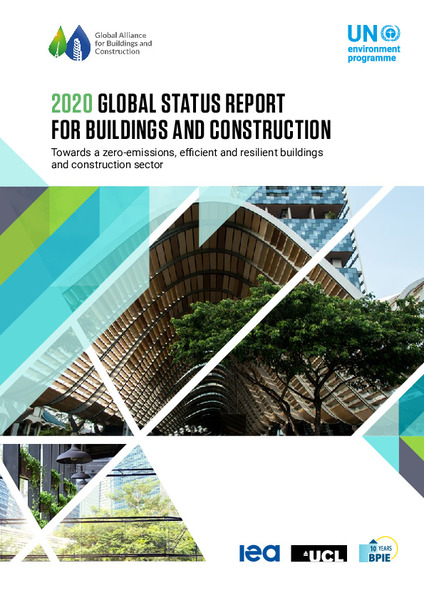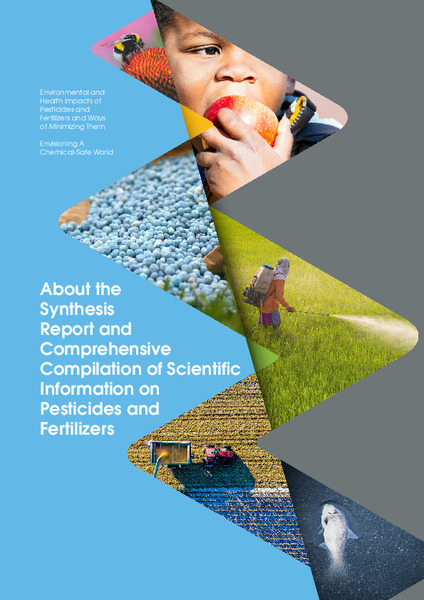Browsing Reports, Books and Booklets by Author "Economy Division"
Now showing items 1-20 of 929
-
1, 3-Dichloropropene, 1, 2-Diciiloropropane and Mixtures Health and Safety Guide 76
United Nations Environment Programme; World Health Organization; International Labour Organisation (1992)Commercial 1,3-dichioropropene is a mixture of cis- and trans- isomers and 92% pure. It may also be used in admixtures with 1 ,2-dibromoethane (Dorloe) or with 1 ,2dichloropropane (D-D , soil fumigant; Nemex Telone , and ... -
1,1,1 - Trichloroethane - Environmental Health Criteria 136
United Nations Environment Programme; World Health Organization; International Labour Organisation (1992)1,1,1-Trichloroethane is a chlorinated hydrocarbon which is manufactured from vinyl chloride or vinylidene chloride by chlorination. The world production was approximately 680 000 tonnes in 1988. It is a colourless, ... -
1,2-Dichloroethane Health and Safety Guide - Health and Safety Guide 55
United Nations Environment Programme; World Health Organization; International Labour Organisation (1991)1,2-Dichioroethane is a colourless liquid, with a sweet taste aid a chloroform-like odour. Reportd odour thresholds are 25-450 mg/ni for perception and 162-750 mg/rn for recognition. 1,2-Dichiorethane is a volatile and ... -
1-Propanol - Environmental Health Criteria 102
United Nations Environment Programme; World Health Organization; International Labour Organisation (1990)1-Propanol is a colourless, highly flammable liquid that is volatile at room temperature and normal atmospheric pressure. It is miscible with water and organic solvents. Analytical methods for propanol include gas ... -
1991 UNEP Flexible and Rigid Foams Technical Options Report: Pursuant to Article (6)of the Montreal Protocol on Substances that Deplete the Ozone Layer under the Auspices of the United Nations Environment Programme - Final
United Nations Environment Programme (1991)This report details the available technical options that can be implemented by each foam market segment to completely eliminate CFC usage known as of 1991. Updates on the progress of each market segment in reducing CFC ... -
2, 4 - Dichlorophenoxyacetic Acid (2,4-d): Environmental Aspects - Environmental Health Criteria 84
United Nations Environment Programme; World Health Organization; International Labour Organisation (1989)2,4-D is a selective herbicide which kills broad-leaved plants but not grasses or conifers. Its chemical structure is a modification of a naturally occurring plant hormone. 2,4-D is available as the free acid but is ... -
2, 4-Dichlorophenoxyacetic Acid (2,4-D) - Environmental Health Criteria 29
United Nations Environment Programme; World Health Organization; International Labour Organisation (1984)All exposure determinations and risk assessments ultimately depend on accurate chemical analyses, and therefore some critical aspects of analysis for 2,4-D residues have been included in the present document. The available ... -
2-Nitropropane - Environmental Health Criteria 138
United Nations Environment Programme; World Health Organization; International Labour Organisation (1992)2-Nitropropane (2-NP) is a colourless, oily liquid with a mild odour. It is flammable, only moderately volatile, and stable under ordinary conditions. It is only slightly soluble in water but miscible with many organic ... -
2-Propanol - Environmental Health Criteria 103
United Nations Environment Programme; World Health Organization; International Labour Organisation (1990)2-Propanol is a colourless highly flammable liquid with an odour resembling that of a mixture of ethanol and acetone. The compound is completely miscible with water, ethanol, acetone, chloroform, and benzene. Analytical ... -
2017–2018 Action Plan Period: Activities & Accomplishments
United Nations Environment Programme; World Health Organization; Global Alliance to Eliminate Lead Paint (2017) -
2018 Global Status Report: Towards a Zero-emission, Efficient and Resilient Buildings and Construction Sector
International Energy Agency; United Nations Environment Programme (2018)This Global Status Report documents the status and trends of key indicators for energy use, emissions, technologies, policies, and investments to track the buildings and construction sector, globally and ... -
2020 Global Status Report for Buildings and Construction: Towards a Zero-emissions, Efficient and Resilient Buildings and Construction Sector
United Nations Environment Programme; Global Alliance for Buildings and Construction (2020)This year’s Buildings Global Status Report provides an update on the drivers of CO2 emissions and energy demand globally since 2018, along with examples of policies, technologies, and investments that support low-carbon ... -
2020/2021 Data Collection for SDG Indicator 12.7.1: Main Results and Conclusions from the First Reporting Exercise
United Nations Environment Programme (2021)The 2030 Agenda for Sustainable Development, “a plan of action for people, planet and prosperity”, was adopted by all United Nations Member States in 2015. It includes 17 Sustainable Development Goals (SDGs) and seeks to ... -
25 Years of Crisis Response
United Nations Environment Programme (2022-03)UNEP is working around the world to respond to natural disasters, industrial accidents, and human-induced crises. Since 1994, UNEP, through its Disasters and Conflicts Branch, has supported more than 50 crisis-affected ... -
The ABC for Sustainable Cities: A Glossary for Policy Makers
United Nations Environment Programme; United Nations Human Settlements Programme (2016)The ABC for Sustainable Cities aims to bring clarity on this. Rather than providing a single univocal definition of what is a “Sustainable City”, it brings together key elements of it by compiling terms and concepts from ... -
About the Synthesis Report and Comprehensive Compilation of Scientific Information on Pesticides and Fertilizers
United Nations Environment Programme; World Health Organization; Food and Agriculture Organization of the United Nations (2022-07)In February 2022, UNEP published a Synthesis Report on the Environmental and Health Impacts of Pesticides and Fertilizers and Ways to Minimize Them in response to the mandate in UNEA Resolution 3/4. Its overall goal is to ... -
Accelerating the Global Adoption of Energy-efficient Electric Motors and Motor Systems
United Nations Environment Programme; United for Efficiency (U4E) (2017)The report guides policymakers on how to promote energy-efficient electric motors in their respective national markets. The report is part of a series of U4E reports on five product groups. The other reports in the series ... -
Accelerating the Global Adoption of Energy-efficient Lighting - U4E Policy Guide Series
United Nations Environment Programme; Global Environment Facility; United for Efficiency (U4E) (2017)This guide offers an overview of the key elements required to transform a national appliance market towards more energy-efficient products through the application of the U4E Integrated Policy Approach. It is cross-cutting ... -
Acetonitrile - Environmental Health Criteria 154
United Nations Environment Programme; World Health Organization; International Labour Organisation (1993)Acetonitrile (CH3CN) is a by-product of acrylonitrile manufacture. It may also be formed by the combustion of wood and vegetation. It is a liquid with an ether-like odour. Acetonitrile is a volatile, highly polar ... -
Acrylic Acid Health and Safety Guide - Health and Safety Guide 104
United Nations Environment Programme; World Health Organization; International Labour Organisation (1997)Acrylic acid is a colourless liquid with an irritating acrid odour at room temperature and pressure. Its odour threshold is low (0.20-3.14 mg/rn3). It is miscible in water and most organic solvents.





















